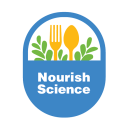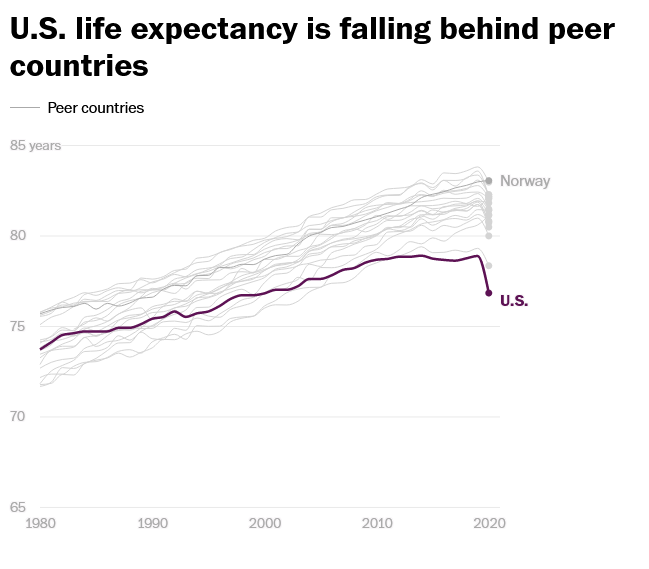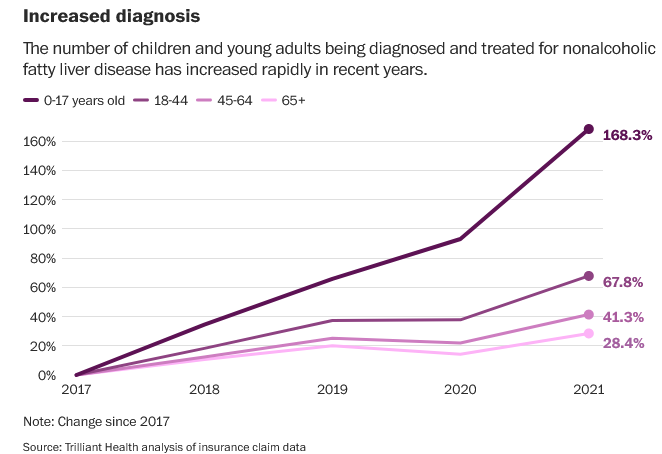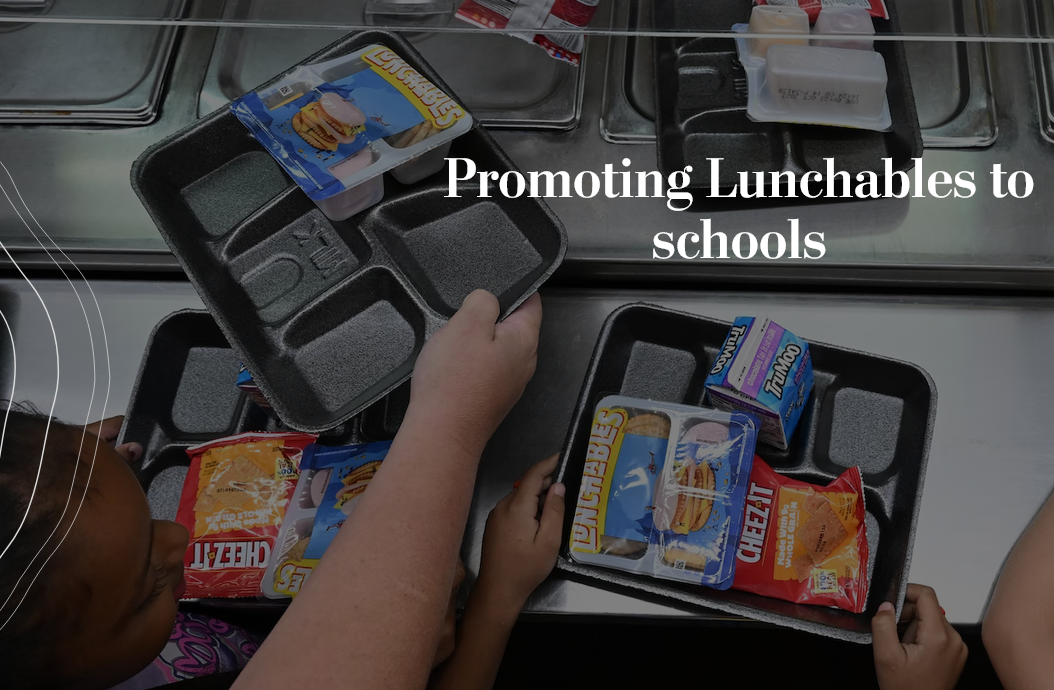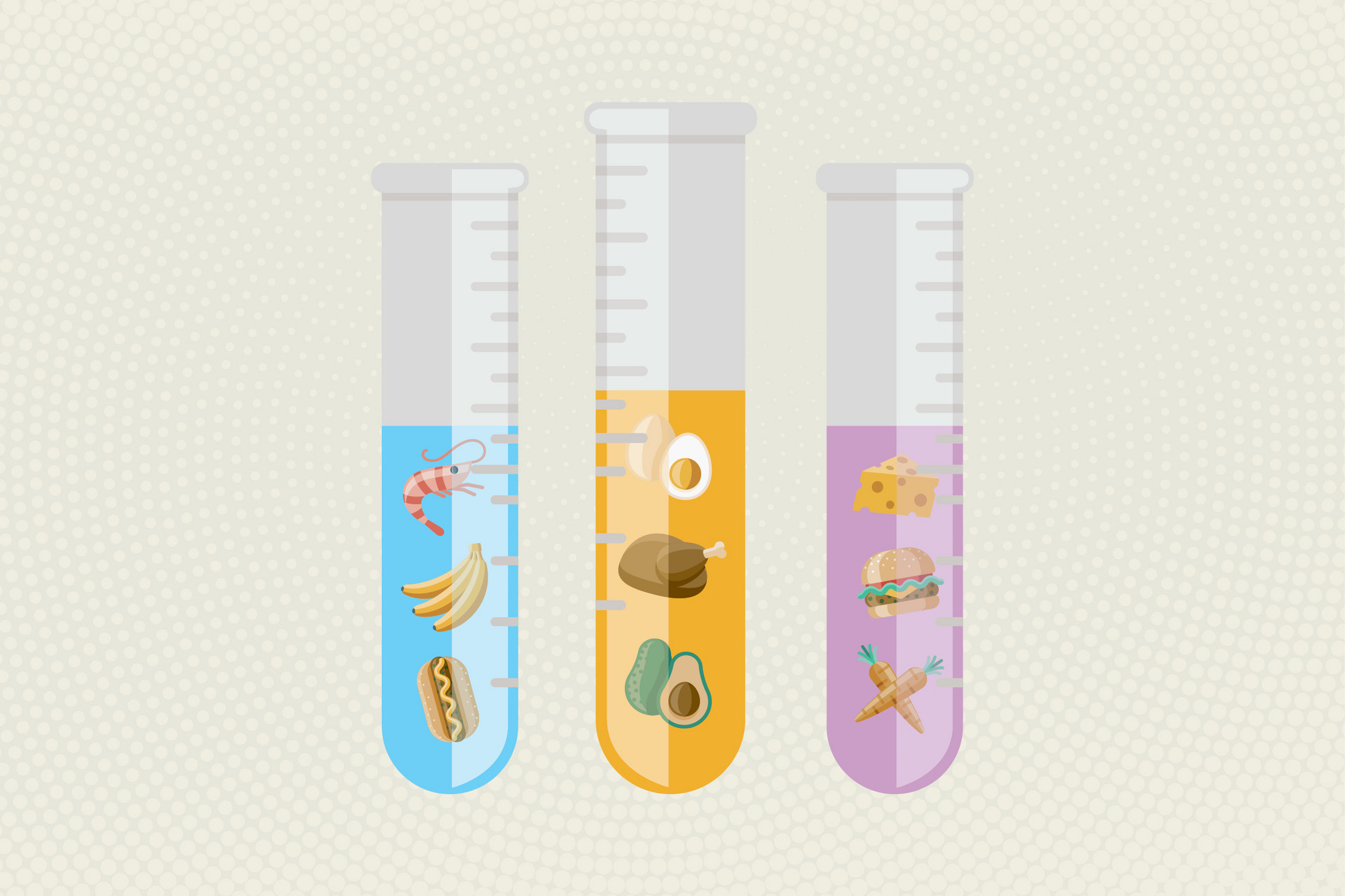The Nutrition Crisis
Americans are living shorter, sicker lives due to poor quality diets.
Americans are living shorter, sicker lives due to poor quality diets.1 We are dying early due to diet-caused disease,2 our children are sick with fatty liver disease3 and Type-2 diabetes, and our food companies are substituting harmful ultra-processed foods as healthy school meals.4 Although our nutrition crisis began pre-Covid, it has made Covid twice as severe because our food made us so vulnerable.5 Other countries have been galvanized to confront diet issues. The U.S. has had no such wakeup call.6,7 Diet-related illnesses are the leading cause of poor health in the U.S.,8 exacerbating health disparities and straining health care spending, worker productivity, and military readiness.9 The economic cost of nutrition-related chronic diseases among 18 to 64-year-olds was $16 trillion from 2011-2020.10 It’s an alarming trend that keeps getting worse, without an effective response. Beyond effects on health, our food system is draining our natural resources and accelerating climate change.11
Diet-driven illness and death are the third of three major food and nutrition crises our country has faced in the past 100 years. At the turn of the 20th century, chemical and microbiological contaminants in food were among the 10 leading causes of death. Then in the 1960s, we recognized calorie-protein-micronutrient malnutrition was driving poor health outcomes in significant areas of our nation. We met these first two crises with bold, effective solutions; we dramatically reduced food contamination through aggressive food safety legislation,12 and we launched robust federal food programs that significantly improved food security.13 It’s time to tackle our third food crisis head on.
Our efforts to understand and decrease food-driven chronic health conditions are grossly inadequate.14 The scope and pace of nutrition science are insufficient to address the country’s pressing nutrition-related challenges. The federal government’s investment in nutrition research has remained flat or declined over several decades, even as diet-related conditions and their societal burdens have climbed.15 Paradoxically, nutrition research funding to prevent diet-related diseases is dwarfed by research funding to treat them.
While federal programs effectively address hunger, they are not meeting the nutritional needs of most Americans. The United States Department of Agriculture (USDA) spends more than $150 billion per year supporting food insecure Americans through the Supplemental Nutrition Assistance Program (SNAP). SNAP has been shown to reduce food insecurity and improve child education and economic outcomes, but SNAP does not promote healthier eating patterns among participants or support participants in procuring healthy, time-saving, meals.16
The U.S. has successfully faced similar public health challenges in the past.17 In 1994, FDA launched an investigation into the design of cigarettes to maintain an addiction. Youth smoking rates were 25 percent. FDA sought to regulate cigarettes, and in 2009 Congress granted it the authority to do so. Today the youth smoking rate is less than two percent.18 It’s time for a similar effort to combat childhood obesity.
To learn more about the nutrition crisis, we recommend these articles:
To learn more about the nutrition crisis, we recommend these articles:
The Evolution of the Nutrition Crisis
In 1901, USDA chemist Harvey Wiley set out to make sure processed food doesn’t make us sick. He created the FDA. His law requires that FDA & USDA ensure the foods on our grocery shelves don’t make us acutely or chronically ill. Yet today, more Americans die each year from chronic food illness, 678,000, than have died in all or our wars.
The first White House Conference on Nutrition took place in Washington D.C. in 1969 under President Nixon. Watch the video below to learn more about this important gathering of people and the policy it inspired.
References
1 Koh HK, Parek AK, Park JJ. Confronting the Rise and Fall of US Life Expectancy. JAMA. 2019;322(20). doi: 10.1001/jama.2019.17303
2 An epidemic of chronic illness is killing us too soon Washington Post, Oct 2023
3 Fatty liver was a disease of the old. Then kids started getting sick Washington Post, Oct 2023
4 How Lunchables ended up on school lunch trays Washington Post, Oct 2023
5 O’Hearn M, Liu J, Mozaffarian D, etal. COVID-19 hospitalizations attributable to cardiometabolic conditions in the U.S.: A comparative risk assessment. JAHA 2021. doi: 10.1161/JAHA.120.019259
6 Bottemiller-Evich H. Diet-related diseases pose a major risk for Covid-19. But the U.S. overlooks them. Politico. 2021
7 America has a life expectancy crisis. But it’s not a political priority. Washington Post, Dec 2023
8 The US Burden of Disease Collaborators. The State of US Health, 1990-2016: Burden of Diseases, Injuries, and Risk Factors Among US States. JAMA. 2018; 319(14):1444-1472
9 Mission: Readiness. Unhealthy and Unprepared: National Security Depends on Promoting Healthy Lifestyles from an Early Age (Council for a Strong America, October 2018).
10 American Action Forum. The Economic Costs of Poor Nutrition 2022
11 Willett W, Rockstrom J, Loken B, Springmann M. Food in the Anthropocene: the EAT-Lancet Commission on healthy diets from sustainable food systems. Lancet. 2019; 393(10170):447-492
12 Blum D. The Poison Squad: One chemists single-minded crusade for food safety at the turn of the twentieth century. Penguin Random House 2019. ISBN 9780143111122
13 Sarson K, Flaherty G, Mande J. Hungry: How the 1969 White House Conference on Food, Nutrition, and Health changed the course of US food policy 2019 Tufts Friedman School of Nutrition
14 US GAO. Chronic Health Conditions: Federal Strategy Needed to Coordinate Diet-Related Efforts. GAO-21-593
15 Boudreau C, Bottemiller Evich H. How Washington keeps America sick and fat. Politico. 2019
16 Mande J, Flaherty G. SNAP as a health intervention. Current Opinion in Pediatrics. 2023
17 Kessler, D. A Question of Intent, Public Affairs 2002
18 CDC, Youth and Tobacco Use 2023
